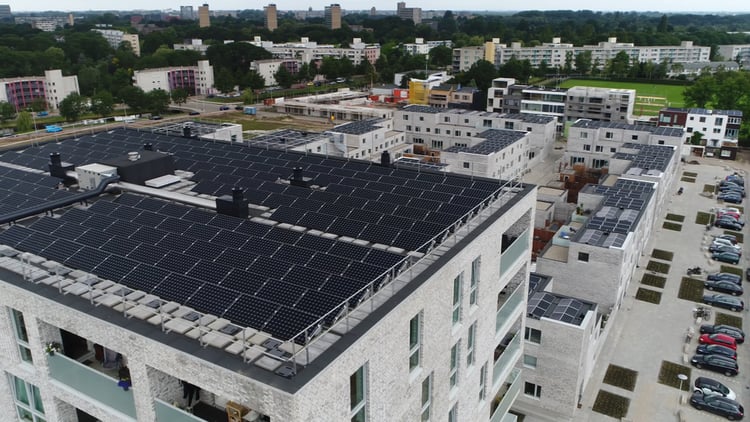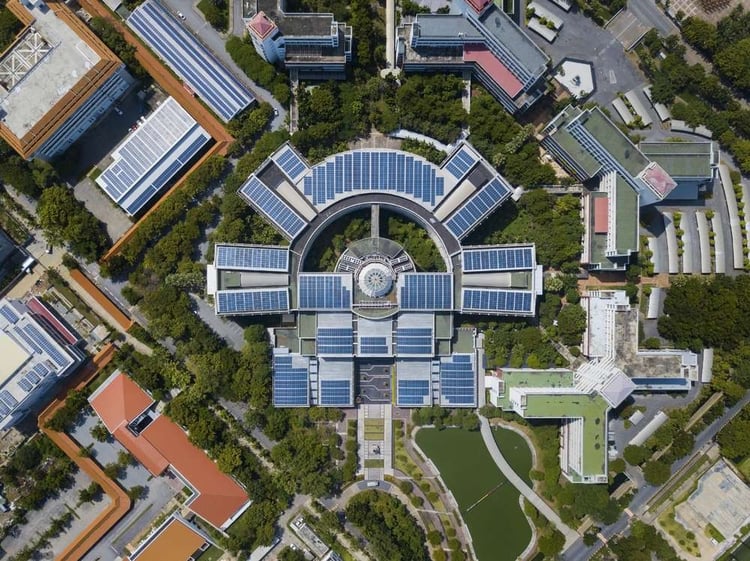Solar energy has become America's fastest-growing source of electricity , accounting for more than half of installed generating capacity in 2021. However, there are still many obstacles preventing wider adoption of photovoltaics, and making it viable for renters is one of them. Solar panels also have limited use in tall buildings, which have a small roof area relative to their floor area.
Community solar is a great option when installing your own solar panels is not feasible. Instead, you can join a shared solar panel as a subscriber or shareholder, and a proportional amount of the electricity produced becomes yours. Kilowatt-hour production is measured at the project site and subtracted from your energy bill.
Save on energy bills and reduce your building's emissions with solar energy.
In the case of New York City, community solar can help buildings reduce their emissions to meet Local Law 97 of 2019 . There is little incentive for landlords to install solar panels when tenants will keep the savings, and tenants have little incentive to improve a property they don't own. However, community solar offers a business model that benefits both.
According to LL97 2019, your building's emissions increase by around 289 g of CO2 equivalent for every kilowatt-hour consumed from the grid. In other words, you are adding one metric ton of emissions for every 3,460 kWh, and the penalty is $268/ton. However, electricity from solar panels is emission-free and exempt from LL97 penalties.
Community Solar is ideal for renters and commercial tenants

Using energy efficient appliances is viable for renters as they can be easily taken to another location at the end of the tenancy. Unfortunately, the same cannot be said for solar panels – they are firmly anchored to the roof and are not easy to transport.
Unless a renter or commercial tenant plans to stay in a building for a long time, installing solar panels doesn't make much sense. To break even, tenants must wait at least until the end of the payback period, and they may miss out on better deals.
- Relocating solar panels is complex and they will typically void their warranty if they are moved from their original installation location.
- It may be possible to sell them to the owner or the next tenant, but at a very reduced price.
These problems are avoided completely with community solar energy. Tenants can simply join a project to save on energy bills, without having to modify the property they are currently using. Homeowners also benefit, as electricity from community solar projects can be used to offset emissions under Local Law 97.
Community Solar for Homeowners Without Roof Space

Lack of space limits the use of solar panels for many electricity consumers, and the following are some common examples:
- Owners of housing integrated into multi-family buildings.
- Companies that have an entire floor in a high-rise building.
- Homeowners with a roof design not suitable for solar panels.
Under these conditions, installing solar panels is not an option, even if you own the property you occupy. However, you can join a community solar project to save on electricity bills. You also have the flexibility to rent the property and use your solar savings elsewhere.
Participating in a community solar project as a shareholder is generally cheaper than installing your own panels. Residential solar systems are typically priced at $3 per watt or more, while commercial panels fall below $2 per watt. Thanks to their size, community solar projects can benefit from economies of scale.
Solar Community for Homeowners

If you are an owner, only electricity consumption in common areas counts towards your electricity bill. However, all energy used by the building is considered when calculating emissions under LL97 , even that consumed by tenants. As a result, you save on fines when your tenants switch to cleaner energy sources.
Installing solar panels to cover the electricity consumption of common areas is viable in this case, but it can also encourage the use of community solar energy among tenants. This results in a win-win situation – tenants save on energy bills, whilst also reducing the building's emissions. Partnering with community solar projects will become a viable strategy for building owners trying to reduce emissions below LL97 limits.
In July 2021, the New York State Energy Research and Development Authority (NYSERDA) announced a $52.5 million Incentive Fund for community solar projects serving low- to moderate-income households. If you are an affordable housing provider, your tenants can directly benefit from community solar projects that utilize these funds. Eligible solar projects can benefit from both this fund and the existing NY-Sun program.

